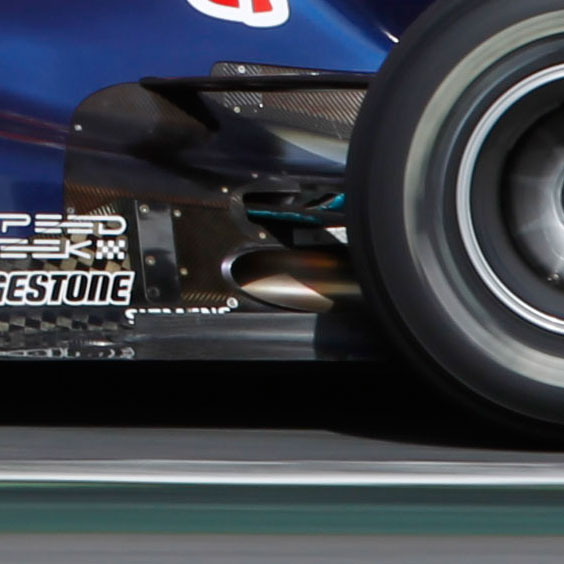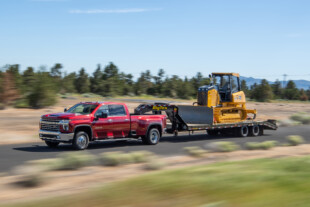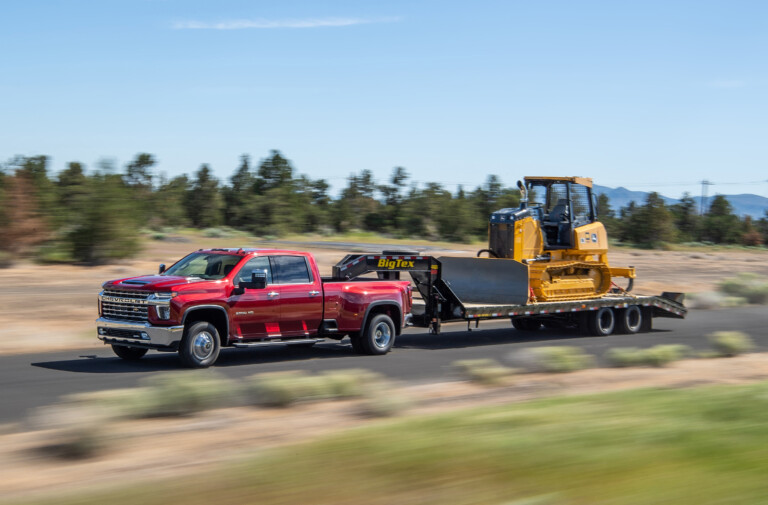Red Bull was absolutely dominant in the first few years of the decade, thanks largely to the brilliant mind of aerodynamicist Adrian Newey. His onslaught of innovation in the aerodynamic arena gave Vettel his four world championships and demoralized the competition. By maximizing the downforce produced at the rear end of his car, he gave his F1 beasts incredible grip, but also gave his drivers incredible confidence in the car.
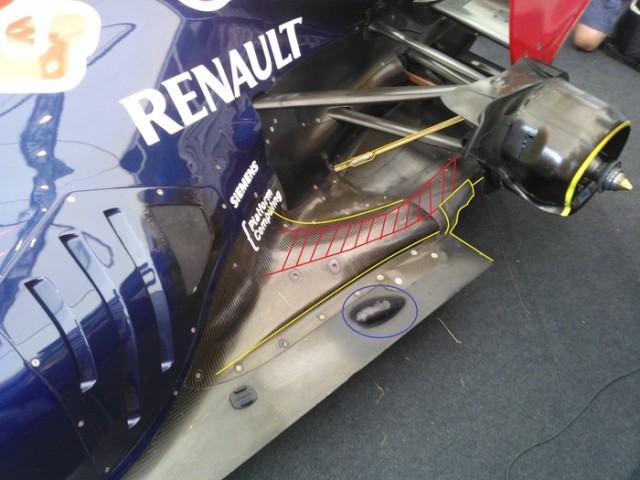 If the rear end shows plenty of stability at high speed, that will give the driver the urge to chase those last vital tenths. It’s been said that the biggest gains in time are found in the “hero” corners — where downforce is at a premium and the consequences for a mistake are serious. Because of this poise and dependability the RB6 offered, Sebastien Vettel and Mark Webber could chuck these cars into high-speed corners without the faintest trace of a lift or even a suggestion of braking.
If the rear end shows plenty of stability at high speed, that will give the driver the urge to chase those last vital tenths. It’s been said that the biggest gains in time are found in the “hero” corners — where downforce is at a premium and the consequences for a mistake are serious. Because of this poise and dependability the RB6 offered, Sebastien Vettel and Mark Webber could chuck these cars into high-speed corners without the faintest trace of a lift or even a suggestion of braking.
The immense grip this car generated came from a bevy of aerodynamic trickery that has since been banned. Most notably, the blown diffuser had a huge effect on generating that surreal level of cornering grip. While it’s a fairly complicated process to explain, it can be reduced to simple terms.
As drivers lifted off the throttle to turn into a corner, the ECU would keep the throttle is still totally open, despite being accompanied by no spark or fuel. This meant that the engine acted an air pump, pushing air onto the rear diffuser without driving the wheels, and generating more downforce.
There are two ways of blowing the diffuser. “Cold blowing” entailed the air merely pass through the engine, and in doing so, could develop about 3/4 the amount of downforce found when driving the engine under normal full-throttle situations. As the technology advanced, the “hot blowing” used a bit of fuel and ignited it within the exhaust, thereby increasing exhaust energy and speed, and increasing downforce.
This could be seen in the later versions of these cars, but hot blowing had to be done with a bit of respect. The additional temperatures from this process would run the engine extremely hot, and in order to negate any torque produced during this exhaust-combustion, timing would have to be reduced significantly — up to 35-40% — with the help of clever engine mapping. Most interestingly, this sort of process ensured a more consistent exhaust flow and made the transition between levels of downforce more progressive, and the cars easier to manage.
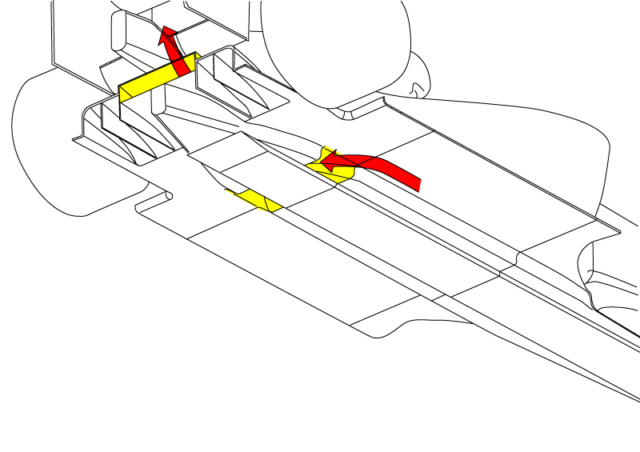
By channeling air through a narrower opening in the bottom, the expansion ratio was increased and the diffuser could suck the car to the ground better.
The diffuser itself works much like a wing, in allowing air to accelerate through a confined area that expands towards the end of the car’s bodywork. When the air expands, it moves more quickly over the underside of the car, lowers air pressure, and generates downforce. The air flows underneath the car and as it nears the rear tires, the underbody area expands, reducing air pressure, which effectively sucks the car to the ground.
With the double-diffuser Red Bull used with this car, they cut a massive channel through the underbody of the car which increased the air’s expansion ratio. In other words, by funneling air through an opening in the floor, they could increase the area in which air would expand as it headed out the backside of the car and through the diffuser, giving the car additional “sucking” power.
Listening to the onboard footage, it becomes apparent how much grip these cars really had. The 2.4-liter V8s of the era produced somewhere in the vicinity of 750 horsepower, and yet Vettel stabs at the throttle like he’s driving a kart with a lawnmower engine. In the middle of fast corners, the transition from lifting to flooring indicates that there’s such an abundance of aero grip that no consideration for traction is given — the lift is merely to help get the blown-diffuser grip while changing direction. In fact, many quicker corners are taken flat — and steering grip only seems to increase with speed.
It’s this sort of counter-intuitive behavior that makes mastering high-downforce cars so challenging to those unfamiliar with the concept. In order to reach the potential of the car, one has to argue with the rational side of their mind which tells them that if they’re to continue going this quickly, they can expect a fiery, gruesome death. Though we spend an immeasurable amount of time complaining about F1 and its drivers, if anyone’s capable of managing 5.5 g-cornering forces, they deserve a little respect.



